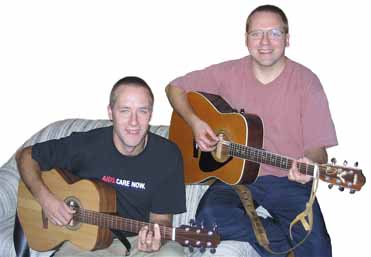Canadian Mennonite
Volume 11, No. 02
January 22, 2007

Anabaptists can’t avoid centuries of Christian tradition
Becoming Anabaptist: The Origin and Significance of Sixteenth-Century Anabaptism, second edition. J. Denny Weaver. Scottdale and Waterloo: Herald Press, 2005, 275 pages.
Was 16th-century Anabaptism a distinct movement with its own unique characteristics, or did it have many of the same features found in Catholicism or Protestantism? For decades, scholars have debated this question and have proposed various views. In the middle of the last century, historians generally held that Anabaptists represented the culmination of the Protestant Reformation, fulfilling the original visions of Luther and Zwingli. More recently, scholars have argued that Anabaptists also had much in common with late medieval Catholic mystics, and even peasant revolutionaries who sought to overthrow political and ecclesiastical elites.
Becoming Anabaptist provides a somewhat different response to the debate. The author, who has served as professor of religion at Bluffton University in Ohio since 1975, acknowledges that Anabaptism demonstrated elements of continuity with the various players of the Reformation period, but, in the end, he argues that the movement stands in its own right. Anabaptism, Weaver insists, appeared as its own kind of movement, different from the Roman Catholic tradition, but also different from various Protestant alternatives.
First published in 1987, this volume is a revised and expanded work that incorporates recent scholarly findings and seeks to reach a wider audience beyond the Mennonite world. The author provides a readable history with the hope that his audience will embrace the Anabaptist perspective. The chapters introducing Anabaptism in Switzerland, South Germany, Moravia and the Low Countries are well written.
So what about the relationship between Anabaptism and the wider Christian tradition, and why should it matter? The book correctly recognizes the unique nature of Anabaptism. However, the assumption that Anabaptists were successfully able to loop back to the narrative of Jesus and the early church, without also being moulded by centuries of Christian tradition, is idealistic and misleading.
Virtually all Protestants in the 16th century—along with countless reformers throughout the Middle Ages—made an effort to return directly to the original apostolic character of the first-century church. Yet neither they nor the Anabaptists—nor the Mennonites who came after—were truly capable of jumping back 1,500 years of history to imitate Jesus and avoid the filter and sway of Christian tradition. Anabaptists had a high regard for Scripture, but their theological, spiritual and moral path, while not a strict imitation of Catholicism or Protestantism, was, nevertheless, influenced and shaped by these traditions, not unlike the way in which Christians today are influenced by their religious, political and social surroundings.
It is important to understand this dynamic not only for the sake of the historical record, but also for the cause of Christian ecumenicity. While denominations, in the context of inter-church conversations, have a responsibility to articulate their differences, they also have an obligation to point out where they can agree, if mutual understanding and cooperation is to be achieved.
Website looks to promote Mennonite worship music
Steinbach, Man.
 |
Mennonites are “happy to sing the best of everyone else’s worship music, but we aren’t singing enough of our own.” So says Phil Campbell-Enns, a youth pastor at Grace Mennonite Church in Steinbach.
According to Campbell-Enns, other denominations are producing various kinds of new music for worship. He would like to see Mennonite musicians begin to create and share their own compositions, with lyrics and tunes that reflect unique Anabaptist theology.
Together with Darryl Neustaedter Barg, the associate director of media ministries for Mennonite Church Manitoba, Campbell-Enns has come up with an idea he hopes will inspire sometimes reluctant Mennonite musicians to share their work with a larger audience.
The two have created a worship music web page on the MC Manitoba site (mennochurch.mb.ca and follow the “Resources” link to “Worship”). Launched in early November, the page currently features five songs written by Campbell-Enns, complete with audio recordings of the pieces, suggestions for how the songs can be performed, and guitar chords and piano accompaniment arrangements.
Singers and instrumentalists Meredith Dailey, Ed and Val Peters, Kim Thiessen and Marilyn Houser Hamm perform the worship songs. They include “Mountain of God,” which Campbell-Enns composed for the Mennonite Youth Assembly in Abbotsford in 2000, and “Fill Us With Your Feast,” written especially as a worship resource for the 2007 Lenten services featured in Leader magazine. Barg and Campbell-Enns are inviting congregations to use the music on the web page free of charge.
Campbell-Enns is hoping his willingness to share his music publicly on the page will inspire other musicians to follow suit. “There are many more Mennonite musicians with way more talent than I have,” he says. “My songs are just a kind of test balloon to get the web page started.”
Barg says the Menno Folk concerts staged annually in Ontario and Manitoba have proven there are talented musicians in the Mennonite church.
“Those musicians need to be nurtured and encouraged to be creative for the sake of God’s kingdom,” says Campbell-Enns. “We want our web page to motivate and enable musicians to write and then share their worship songs.”
Barg and Campbell-Enns are hopeful that in a year or two as many as 25 new songs by professional and talented amateur composers alike will be featured on the page.
Although the web page is part of the MC Manitoba website, Barg and Campbell-Enns are encouraging musicians from across the country to participate.
“This should be a way for someone writing music in British Columbia to share their worship songs with members of congregations in Ontario they don’t even know,” says Campbell-Enns.
Musicians interested in having their work featured on the page should e-mail Barg at dnbarg@mennochurch.mb.ca.